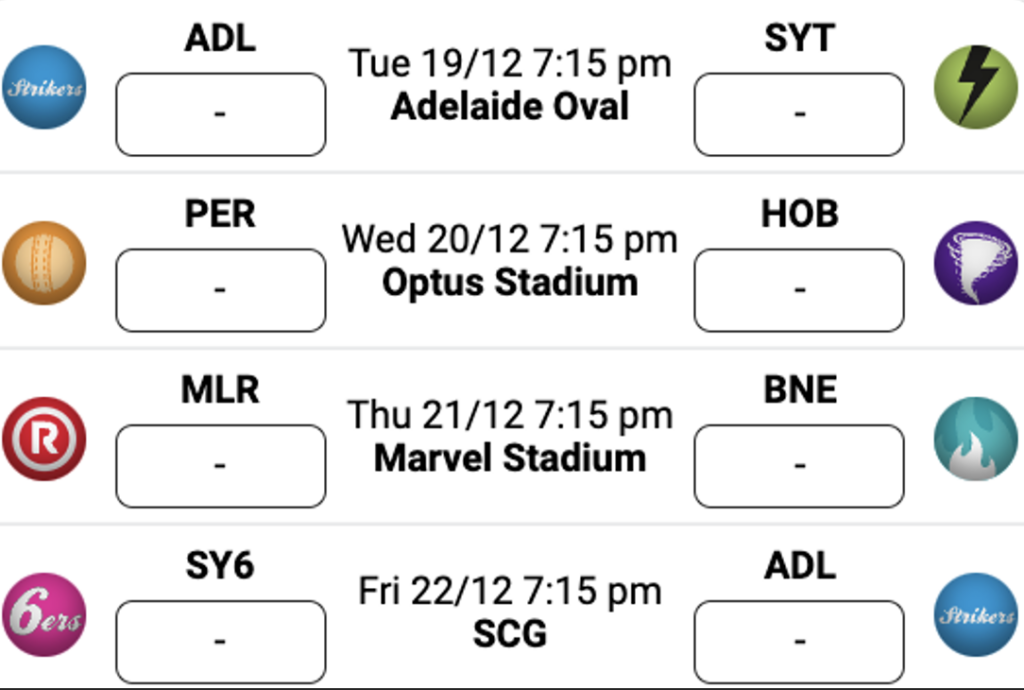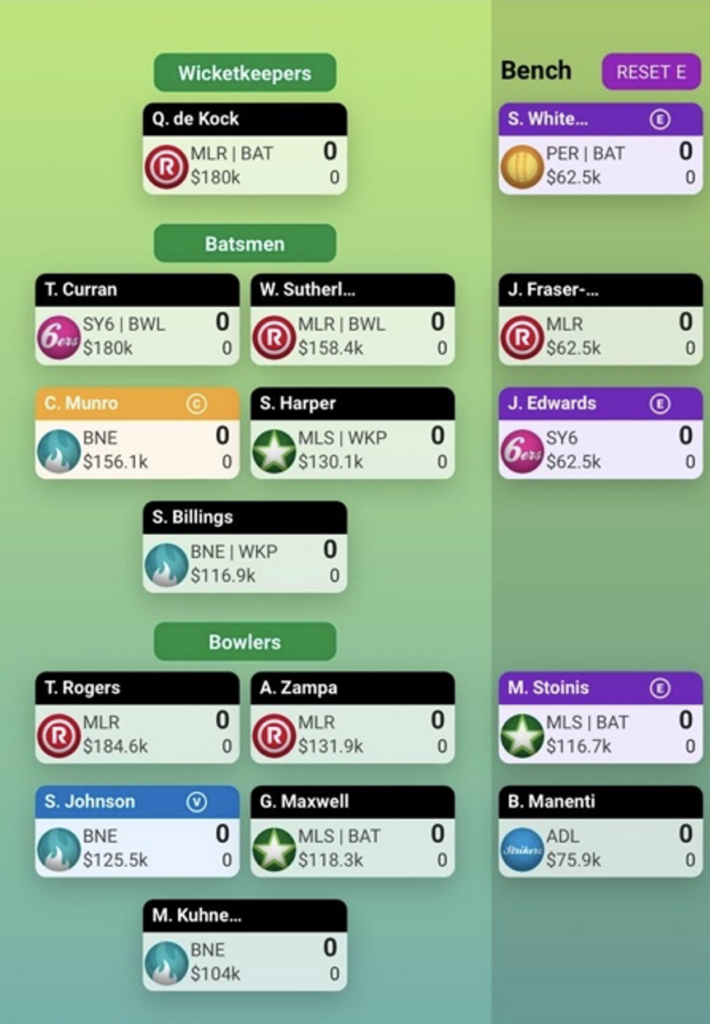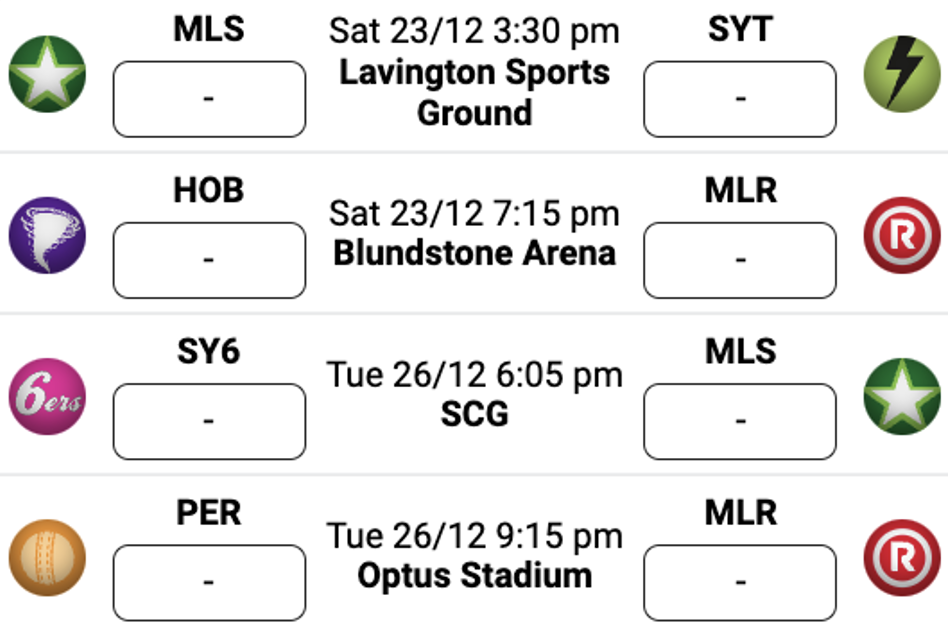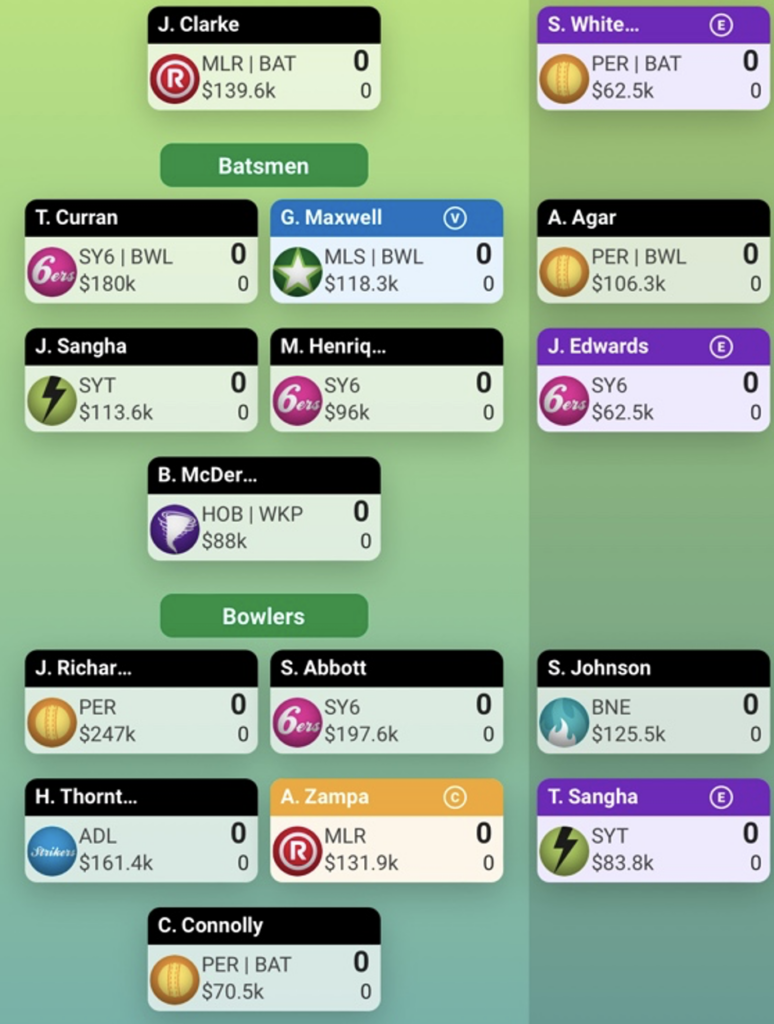Tim Williams
SC Playbook founder, 2nd NRL 2020, 43rd BBL 21/22'
As a vital part of Supercoach, we explain how to properly use the loophole in both BBL and AFL.
BBLWhat is the loophole?
It’s a question we’re asked frequently at SC Playbook, and it’s a reminder that Supercoach caters to all levels of player, not just the experienced campaigners.
Understanding what the loophole is and how it can be activated is vital to succeeding in both Supercoach BBL and Supercoach AFL which use the same system.
While you can implement it at varying levels of technicality, as long as you understand the base level of what it entails you’ll do just fine.
I’ll do my best below to hopefully explain what loopholing is, and how to implement it into your game.
While BBL examples will be used below, the same applies to AFL, while the NRL system is a little different, see here.
If you have any questions just leave it in the comment section at the bottom of the page and I’ll respond.
Embed from Getty ImagesThe loophole is a method used to maximise scoring in your Supercoach team, based on the way the game has been set-up.
There are two types of loopholing you need to be aware of:
Both types utilise the same concept, but are used for different practices within the game.
Note that loopholing only works if you have at least one non-active player in your squad. That may be a player whose team is on the bye, an injured player, or a player that doesn’t get picked in the team.
In Supercoach, only the scores of the starting eleven players you choose to play in your team each round count towards your team total for that round.
The five players on your bench score points, and will alter value as a result, but their scores won’t count towards your total.
Unless you know how to loop…
You are able to select three emergency players on your bench by selecting the purple E icon when hovering over the player’s name.
If a player in your starting team from the same position is ruled out of their game and doesn’t score points, the player you select on your bench as the emergency (E) will automatically come into your starting team on completion of the round as a replacement to the player who was ruled out.
It’s important to note that the auto-emergency system differs to NRL Supercoach.
In NRL Supercoach, when a player is ruled out you get the lowest scoring player from your entire bench.
In BBL Supercoach, the player you have selected in that position (BAT, BOWL, WKP) as your AE will come into your team.
This is how you use it.
Let’s assume the five players on your bench are all active and playing for their respective team in the upcoming game.
The first thing to note is the timing of when each team plays in the corresponding round. This is important and absolutely crucial to be aware of before the round starts.
As an example, I’ll use Supercoach BBL 2023, round 2.
(Side note: Round 1 has five teams playing two games or more, this is a complete anomaly in Supercoach and makes the loophole largely ineffective, so ignore it.)

To use the loophole, it’s vital your emergency player is in an early game in the round.
Ideally game one, game two is generally also okay. Let’s use the below team as an example.

The wicket-keeper slot is always a good opportunity to loop.
Scorchers player Sam Whiteman plays in game two of the round, so you put the emergency on him.
If he scores well, let’s say 75 points, technically it won’t count to your score as he’s on your bench.
However, the Melbourne Stars are on the bye, meaning wicket-keeper batsmen Sam Harper isn’t playing.
As he is a dual position player (WKP-BAT), as is Quinton de Kock, you can switch Harper up into the starting wicket-keeper slot.
When the round finalises, the game identifies Harper’s 0 points as ‘did not play’, and automatically plugs in Whiteman into that spot, meaning his 75 points will count towards your total.
Here’s where we find joy in the loop.
If Whiteman scores poorly, you simply leave de Kock in the wicket-keeping spot for his impending score.
(Note in the above example you would still need to replace Harper on the bench as he’s not playing).
So you’ve had a risk-free crack at Whiteman, essentially giving you two opportunities to get a good score for that spot.
This can also be done for the batting and bowling positions.
If the scenario was to play out where all three of your emergencies scored well and you wanted to loop all three, you would of course have to have three players who aren’t active that round to initiate the loop.
The captaincy loophole works essentially in the same manner as explained above, with a few minor tweaks.
For this example, let’s use the round 3 fixtures and an adjusted team.


It’s vital for it to work that you put the vice-captaincy (VC) option on a player that plays in a game before your selected captain.
Glenn Maxwell and the Stars play game one, so let’s put the vice-captaincy on him.
If VC Maxwell scores well in their first game of the round, let’s say he scores 75, you can lock in that player as your captain for the week.
To do so, you would then have to bring a non-active player into your starting team, and give them the captaincy.
In this round, the Brisbane Heat have the bye, so Spencer Johnson would be great for this.
You would bring Johnson into your team for your weakest option, let’s say Cooper Connolly, and you would captain Johnson.
When the round finishes, the game would note Johnson’s 0 points and automatically make Maxwell your captain, doubling his strong score.
If Maxwell failed in his first game, you simply leave the captaincy on Adam Zampa or another player of choice.
When using the loophole, the varying fixtures for every Supercoach round play a significant role.
Some rounds, there’s ample opportunity to use the loophole, while on other rounds it may be impractical and much harder to do so.
We’ve added a tool on our website that calculates whether it’s worth using a vice-captain loophole or not.
Sick of watching the Boxing Day Test at the rents? If you’re looking to get into the housing market, but have no idea where to start, contact Pat and George from Mortgage Choice SCW to get you on the right track. Save $129 by mentioning SC Playbook for a FREE CONSULT!

Leave a Reply
You must be logged in to post a comment.